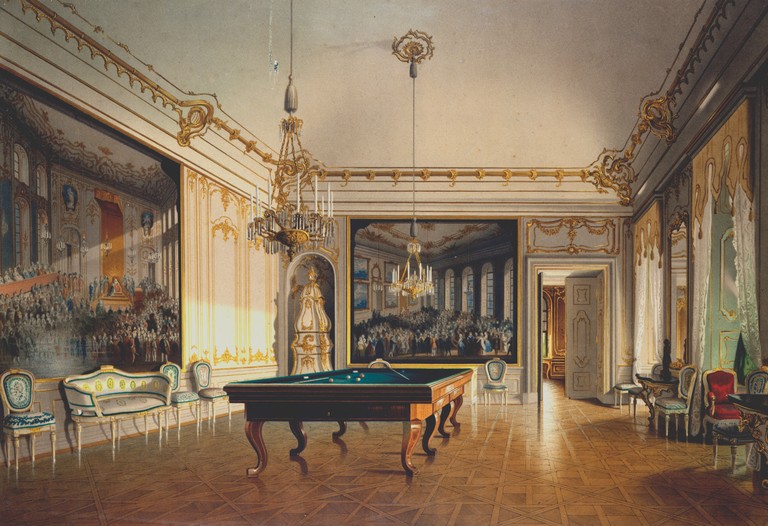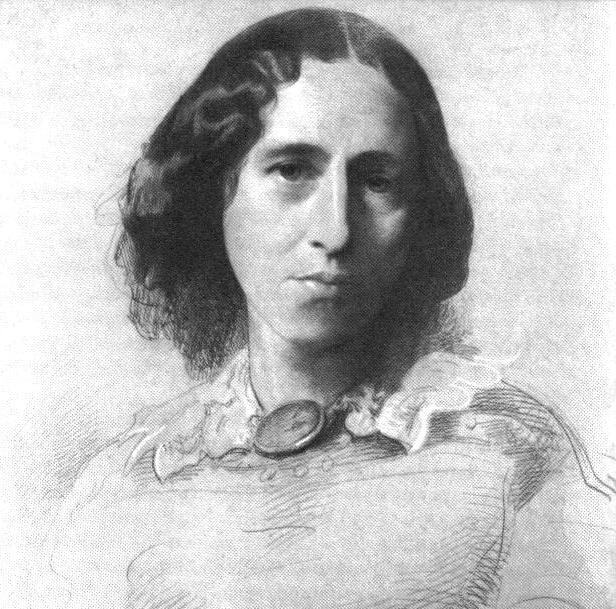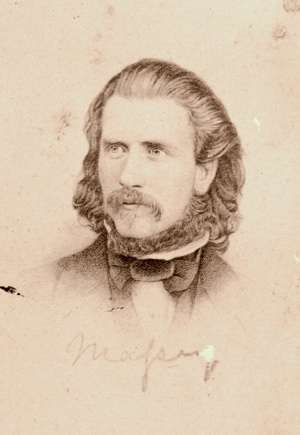|
Craigcrook Castle
Craigcrook Castle is a well-preserved castle giving its name to the Craigcrook district of Edinburgh, about west of the centre of Edinburgh, Scotland. The castle is primarily of the 17th century, though with later additions. In the 19th century, it was the home of Francis Jeffrey, Lord Jeffrey, and became known for its literary gatherings. It is a category B listed building. History The lands of Craigcrook were, in the 14th century, in the possession of the Graham family. In 1362 the lands were given to the chaplains of St. Giles' Cathedral. They passed through several more owners before 1542, when William Adamson, a merchant and burgess of Edinburgh, took possession. Adamson owned large estates in what is now north-western Edinburgh, including Craigleith, Groathill and Clermiston. Adamson was killed at the Battle of Pinkie on 10 September 1547. The Adamson family constructed, or reconstructed, Craigcrook Castle, and owned it until 1659, when it was sold to John Mein, a m ... [...More Info...] [...Related Items...] OR: [Wikipedia] [Google] [Baidu] |
Edinburgh
Edinburgh ( ; gd, Dùn Èideann ) is the capital city of Scotland and one of its 32 Council areas of Scotland, council areas. Historically part of the county of Midlothian (interchangeably Edinburghshire before 1921), it is located in Lothian on the southern shore of the Firth of Forth. Edinburgh is Scotland's List of towns and cities in Scotland by population, second-most populous city, after Glasgow, and the List of cities in the United Kingdom, seventh-most populous city in the United Kingdom. Recognised as the capital of Scotland since at least the 15th century, Edinburgh is the seat of the Scottish Government, the Scottish Parliament and the Courts of Scotland, highest courts in Scotland. The city's Holyrood Palace, Palace of Holyroodhouse is the official residence of the Monarchy of the United Kingdom, British monarchy in Scotland. The city has long been a centre of education, particularly in the fields of medicine, Scots law, Scottish law, literature, philosophy, the sc ... [...More Info...] [...Related Items...] OR: [Wikipedia] [Google] [Baidu] |
Fortalice
A fortification is a military construction or building designed for the defense of territories in warfare, and is also used to establish rule in a region during peacetime. The term is derived from Latin ''fortis'' ("strong") and ''facere'' ("to make"). From very early history to modern times, defensive walls have often been necessary for cities to survive in an ever-changing world of invasion and conquest. Some settlements in the Indus Valley civilization were the first small cities to be fortified. In ancient Greece, large stone walls had been built in Mycenaean Greece, such as the ancient site of Mycenae (famous for the huge stone blocks of its 'cyclopean' walls). A Greek '' phrourion'' was a fortified collection of buildings used as a military garrison, and is the equivalent of the Roman castellum or English fortress. These constructions mainly served the purpose of a watch tower, to guard certain roads, passes, and borders. Though smaller than a real fortress, they ... [...More Info...] [...Related Items...] OR: [Wikipedia] [Google] [Baidu] |
Billiard Room
A billiard room (also billiards room, or more specifically pool room, snooker room) is a recreation room, such as in a house or recreation center, with a billiards, pool or snooker table. (The term "billiard room" or "pool room" may also be used for a business providing public billiards tables; see billiard hall.) The billiard room may be in the public center of the house or the private areas of the house. Billiard rooms require proper lighting and clearances for game playing. Although there are adjustable cue sticks on the market, 5 feet of clearance around the pool table is ideal. Interior designer Charlotte Moss believed that "a billiard room is synonymous with group dynamics. It's where you mix drinks and embark on a little friendly competition..." History Billiards probably developed from one of the late-14th century or early-15th century lawn games in which players hit balls with sticks. The earliest mention of pool as an indoor table game is in a 1470 inventory list ... [...More Info...] [...Related Items...] OR: [Wikipedia] [Google] [Baidu] |
Lord Tennyson
Alfred Tennyson, 1st Baron Tennyson (6 August 1809 – 6 October 1892) was an English poet. He was the Poet Laureate of the United Kingdom, Poet Laureate during much of Queen Victoria's reign. In 1829, Tennyson was awarded the Chancellor's Gold Medal at Cambridge for one of his first pieces, "Timbuktu". He published his first solo collection of poems, ''Poems, Chiefly Lyrical'', in 1830. "Claribel" and "Mariana (poem), Mariana", which remain some of Tennyson's most celebrated poems, were included in this volume. Although described by some critics as overly sentimental, his verse soon proved popular and brought Tennyson to the attention of well-known writers of the day, including Samuel Taylor Coleridge. Tennyson's early poetry, with its medievalism and powerful visual imagery, was a major influence on the Pre-Raphaelite Brotherhood. Tennyson also excelled at short lyrics, such as "Break, Break, Break", "The Charge of the Light Brigade (poem), The Charge of the Light Brigade", ... [...More Info...] [...Related Items...] OR: [Wikipedia] [Google] [Baidu] |
George Eliot
Mary Ann Evans (22 November 1819 – 22 December 1880; alternatively Mary Anne or Marian), known by her pen name George Eliot, was an English novelist, poet, journalist, translator, and one of the leading writers of the Victorian era. She wrote seven novels: ''Adam Bede'' (1859), ''The Mill on the Floss'' (1860), ''Silas Marner'' (1861), ''Romola'' (1862–63), ''Felix Holt, the Radical'' (1866), ''Middlemarch'' (1871–72) and '' Daniel Deronda'' (1876). Like Charles Dickens and Thomas Hardy, she emerged from provincial England; most of her works are set there. Her works are known for their realism, psychological insight, sense of place and detailed depiction of the countryside. ''Middlemarch'' was described by the novelist Virginia Woolf as "one of the few English novels written for grown-up people"Woolf, Virginia. "George Eliot." ''The Common Reader''. New York: Harcourt, Brace, and World, 1925. pp. 166–76. and by Martin Amis and Julian Barnes as the greatest novel in ... [...More Info...] [...Related Items...] OR: [Wikipedia] [Google] [Baidu] |
Hans Christian Andersen
Hans Christian Andersen ( , ; 2 April 1805 – 4 August 1875) was a Danish author. Although a prolific writer of plays, travelogues, novels, and poems, he is best remembered for his literary fairy tales. Andersen's fairy tales, consisting of 156 stories across nine volumes and translated into more than 125 languages, have become culturally embedded in the West's collective consciousness, readily accessible to children but presenting lessons of virtue and resilience in the face of adversity for mature readers as well. His most famous fairy tales include "The Emperor's New Clothes", "The Little Mermaid", " The Nightingale", "The Steadfast Tin Soldier", " The Red Shoes", " The Princess and the Pea", "The Snow Queen", "The Ugly Duckling", " The Little Match Girl", and " Thumbelina". His stories have inspired ballets, plays, and animated and live-action films. Early life Hans Christian Andersen was born in Odense, Denmark on 2 April 1805. He had a stepsister named Karen. ... [...More Info...] [...Related Items...] OR: [Wikipedia] [Google] [Baidu] |
Charles Dickens
Charles John Huffam Dickens (; 7 February 1812 – 9 June 1870) was an English writer and social critic. He created some of the world's best-known fictional characters and is regarded by many as the greatest novelist of the Victorian era.. His works enjoyed unprecedented popularity during his lifetime and, by the 20th century, critics and scholars had recognised him as a literary genius. His novels and short stories are widely read today. Born in Portsmouth, Dickens left school at the age of 12 to work in a boot-blacking factory when his father was incarcerated in a debtors' prison. After three years he returned to school, before he began his literary career as a journalist. Dickens edited a weekly journal for 20 years, wrote 15 novels, five novellas, hundreds of short stories and non-fiction articles, lectured and performed readings extensively, was an indefatigable letter writer, and campaigned vigorously for children's rights, for education, and for other social ... [...More Info...] [...Related Items...] OR: [Wikipedia] [Google] [Baidu] |
Blank Verse
Blank verse is poetry written with regular metrical but unrhymed lines, almost always in iambic pentameter. It has been described as "probably the most common and influential form that English poetry has taken since the 16th century", and Paul Fussell has estimated that "about three quarters of all English poetry is in blank verse". The first known use of blank verse in English was by Henry Howard, Earl of Surrey in his translation of the '' Æneid'' (composed c. 1540; published posthumously, 1554–1557). He may have been inspired by the Latin original since classical Latin verse did not use rhyme, or possibly he was inspired by Ancient Greek verse or the Italian verse form of '' versi sciolti'', both of which also did not use rhyme. The play ''Arden of Faversham'' (around 1590 by an unknown author) is a notable example of end-stopped blank verse. History of English blank verse The 1561 play '' Gorboduc'' by Thomas Norton and Thomas Sackville was the first English pla ... [...More Info...] [...Related Items...] OR: [Wikipedia] [Google] [Baidu] |
Gerald Massey
Gerald Massey (; 29 May 1828 – 29 October 1907) was an English poet and writer on Spiritualism and Ancient Egypt. Early life Massey was born near Tring, Hertfordshire in England to poor parents. When little more than a child, he was made to work hard in a silk factory, which he afterward deserted for the equally laborious occupation of straw plaiting. These early years were rendered gloomy by much distress and deprivation, against which the young man strove with increasing spirit and virility, educating himself in his spare time, and gradually cultivating his innate taste for literary work. He was attracted by the movement known as Christian socialism, into which he threw himself with whole-hearted vigour, and so became associated with Frederick Denison Maurice and Charles Kingsley. Later life From about 1870 onwards, Massey became increasingly interested in Egyptology and the similarities that exist between ancient Egyptian mythology and the Gospel stories. He studied the ... [...More Info...] [...Related Items...] OR: [Wikipedia] [Google] [Baidu] |
Sir William Stirling-Maxwell, 9th Baronet
Sir William Stirling-Maxwell, 9th Baronet MP KT, of Pollok FRSE DCL LLD (8 March 181815 January 1878), was a Scottish historical writer, art historian and politician. Until 1865 he was known as William Stirling, and several of his books were published under that name. He was Chancellor of the University of Glasgow from 1875 until his death and was also a Knight of the Thistle, considered the highest honour that can be conferred by the Crown on a Scotsman. Life Stirling was born at Kenmure, the son of Archibald Stirling, Esq., of Keir and Cawder, and Elizabeth Maxwell, sister of Sir John Maxwell, 8th Baronet, and Harriet Maxwell (died 1812) and daughter of Sir John Maxwell, 7th Baronet and Hannah or Anne Gardiner, daughter of Richard Gardiner, of Aldborough, Suffolk. Stirling's father owned a number of slave plantations in Jamaica and fathered at least six illegitimate children with women of colour, including Edward Stirling who became one of the first settlers in South A ... [...More Info...] [...Related Items...] OR: [Wikipedia] [Google] [Baidu] |
Henry Cockburn, Lord Cockburn
Henry Thomas Cockburn of Bonaly, Lord Cockburn ( ; Cockpen, Midlothian, 26 October 1779 – Bonaly, Midlothian, 26 April/18 July 1854) was a Scottish lawyer, judge and literary figure. He served as Solicitor General for Scotland between 1830 and 1834. Background and Education His mother Janet Rannie was as sister-in-law of the influential Henry Dundas, 1st Viscount Melville, Lord Melville, through her sister Elizabeth, and his father, Archibald Cockburn, was Sheriff of Edinburgh, Sheriff of Midlothian and Baron of the Court of Exchequer (Scotland), Court of Exchequer. He was educated at the Royal High School (Edinburgh), Royal High School and the University of Edinburgh. His brother, John Cockburn FRSE (died 1862), was a wine merchant and founder of Cockburn's of Leith. Literary career Cockburn contributed regularly to the ''Edinburgh Review''. In this popular magazine of its day he is described as: "rather below the middle height, firm, wiry and muscular, inured to active ex ... [...More Info...] [...Related Items...] OR: [Wikipedia] [Google] [Baidu] |
Sir Walter Scott
Sir Walter Scott, 1st Baronet (15 August 1771 – 21 September 1832), was a Scottish novelist, poet, playwright and historian. Many of his works remain classics of European and Scottish literature, notably the novels '' Ivanhoe'', '' Rob Roy'', ''Waverley'', ''Old Mortality'', '' The Heart of Mid-Lothian'' and ''The Bride of Lammermoor'', and the narrative poems '' The Lady of the Lake'' and '' Marmion''. He had a major impact on European and American literature. As an advocate, judge and legal administrator by profession, he combined writing and editing with daily work as Clerk of Session and Sheriff-Depute of Selkirkshire. He was prominent in Edinburgh's Tory establishment, active in the Highland Society, long a president of the Royal Society of Edinburgh (1820–1832), and a vice president of the Society of Antiquaries of Scotland (1827–1829). His knowledge of history and literary facility equipped him to establish the historical novel genre as an exemplar of Europ ... [...More Info...] [...Related Items...] OR: [Wikipedia] [Google] [Baidu] |







